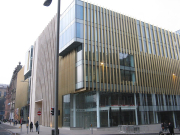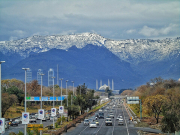
An investigation has revealed that academics from Cambridge University have been assisting Iran in the development of "suicide drones."
According to The Jewish Chronicle's findings, at least 11 British universities, including Cambridge and Imperial College London, were involved in a British-Iranian research program that produced 16 studies with potential military applications.
One of the studies focused on graphene and superconductors, which have implications ranging from next-generation wireless communications to security. This study was co-authored by a team of 11 researchers, eight of whom are affiliated with either Cambridge University's Engineering Department or its Cavendish Laboratory. The remaining co-author is from Shahid Beheshti University in Tehran.
Shahid Beheshti University has been under UK Government sanctions since 2011 due to its involvement in scientific research related to Iran's nuclear activities. These sanctions prohibit the transfer of technology with military applications to individuals or institutions connected to Iran.
The revelation of these connections has prompted calls from various figures, including former Conservative cabinet minister David Davis and Shadow Foreign Secretary David Lammy, for the government to investigate this potential violation of sanctions and take appropriate action. Under British law, breaching these sanctions carries a maximum penalty of seven years in prison.
It is worth noting that the University of Cambridge is not the only British institution implicated in passing research with military applications to Iranian counterparts. The investigation uncovered collaborations on unmanned aerial vehicles, special alloys for military aircraft, and technologies aimed at blocking electronic eavesdropping.
Farzin Nadimi, an expert on Iran's military at the Washington Institute, stated that "almost all" of the universities involved in the study have signed contracts with the IRGC (Islamic Revolutionary Guard Corps) or the Ministry of Defence for military-related research. Photo by Magnus Manske, Wikimedia commons.








































